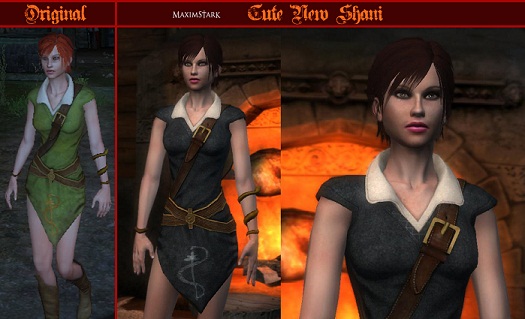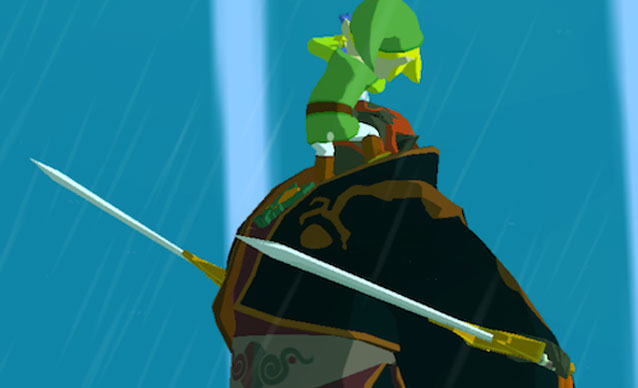

Let's start with the elephant in the room - May's Mystery: Forbidden Memories looks like a shameless Professor Layton knockoff. The art style, the protagonist with button eyes, the interface, the overhead map, and of course the puzzle-driven mystery adventure - it's hard to get around. If someone tells a development team "Make a game that's exactly like that other popular game but retails for $10 less," they would produce something that looks almost exactly like May's Mystery. Perhaps this is a coincidence! We'll never know.
Above: It's not exactly like Professor Layton. The hint coins are in the top middle instead of the top right
With that out of the way, let's give it a fair shot. Is May's Mystery a GOOD shameless-Professor-Layton-knockoff lookalike? The game starts when May and her brother Tery are out on a hot-air balloon ride and the pilot manages to accidentally fall out of the basket. The siblings survive the ensuing crash landing, but when May regains consciousness, she finds her brother has gone to look for help in nearby Dragonville. She quickly discovers that everything is not as it seems in the town. It's a "curious village," if you will.
You move May in a fairly straight line through the world, hopping from challenge to challenge. Solve a puzzle to escape being eaten by the pet spiders of a woman who keeps her husband locked in a dungeon. Solve another puzzle to rearrange a hostile old man's medications so he falls unconscious. (There was more than one point in the story when we said "Wow, that's a little dark.")
Above: This is a museum of ballooning victims. Realistic wax corpses are strewn around the floor. No additional context for this is given
As a collection of puzzles, May's Mystery largely succeeds, and there's a good variety to the challenges. You've got your "pour water from one container to another" puzzles, your sliding block puzzles, matchstick puzzles, algebra word problems, picross, and so on. The cute art style belies the brain-busting toughness of some of these challenges, however, and the difficulty seems schizophrenic. You might solve one murderously hard puzzle, then be presented with one of the many rhythm minigames throughout the storyline. These rhythm challenges only ask that you repeat the notes played by tapping the stylus on the touchscreen, and they barely require any thinking. After that, the game will turn around and ask you to calculate the probability of four people each winning a hand of poker given that there are 36 possible communal cards remaining.
Fortunately, you can earn hints by playing puzzles outside of the main storyline. Burn 15 hint points and you can skip a troublesome puzzle entirely. Of the game's 270 puzzles, only 89 are part of the main story, so there's no shortage of hint points to be earned. We spent plenty skipping puzzles that stumped us, but probably more on skipping rhythm puzzles that we didn't want to bother with. The "hidden object" puzzles also seem badly out of place. They're all the rage in the casual gaming market, and the scenes are well-rendered, but the tiny DS screen is not a good medium to be hunting for fine details in. Spending much time on these is asking for a wicked eyestrain headache.
Above: Keep in mind this is the actual resolution of a DS Lite screen
There's a bigger problem with the game, though, and that's the writing. The script seems like it was written by someone who speaks English, but not as a first language. (Judging by the names in the credits, the development team is in Russia or Eastern Europe.) There's punctuation in odd places, words are capitalized when they shouldn't be and sentences are awkwardly phrased. For instance, when a woman named Pepper is giving May a puzzle that involves a identifying a certain letter of the alphabet, the game tells you "It's the beginning of Pepper's astrological sign and this sign is also related to the commonly greatest zoo attractions." It isn't broken English, but it's definitely cracked.
Above: Mouse, I don’t even know what your deal is. Get outta here, you
Most of the time, the dodgy writing can be shrugged off. However, many of the tougher puzzles, the "color area" puzzles in particular, don't give the player much feedback on when they've broken a rule of the game. When the rules are ambiguously worded or difficult to parse, you're left with May giving you disappointed fail-faces and not knowing if you've gotten the logic wrong or if you just don't understand the game in the first place. A good localization editor could have cleared up these problems, but none seem to have worked on May's Mystery.
Above: A localization editor might have also had something to say about the bone-in-nose island natives who play bongos and go "waka haka haka." But we digress
Again, there are good puzzles here, the kind where you can unravel the problem by finding just the right thread of logic to pull on. There's also plenty of picross-type puzzles, which hold up well even after playing a few dozen. However, outside of these specific puzzle types, there isn't much to recommend May's Mystery. The story is serviceable for moving you from one puzzle to the next, but not particularly engaging, and there isn't much to do in the world except tap through dialog and receive the next puzzle in a fairly linear fashion. If you're choosing between May's Mystery and one of the other puzzle/adventure games on the shelf, you might want to ask yourself: are you really that hard up for $10?
Oct 7, 2011




 Watch Dogs Review (PS4)
Watch Dogs Review (PS4) Top 10 Wii U HD Games We Want To See
Top 10 Wii U HD Games We Want To See Toxikk (PC) Beginner / Multiplayer Guide
Toxikk (PC) Beginner / Multiplayer Guide Destiny: The Taken King - Complete guide to the Sparrow Racing League
Destiny: The Taken King - Complete guide to the Sparrow Racing League Rainbow Six Siege weapons available for your Operators
Rainbow Six Siege weapons available for your Operators